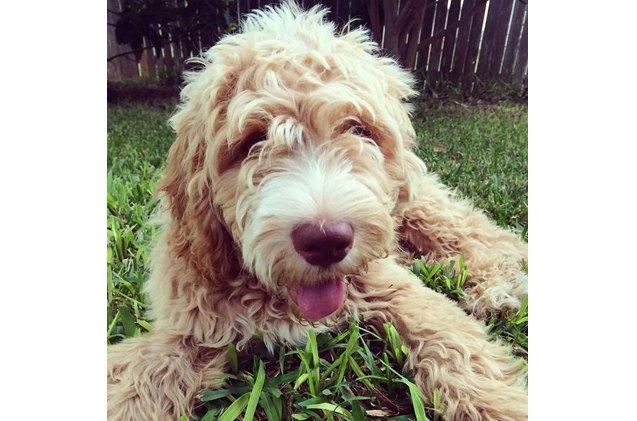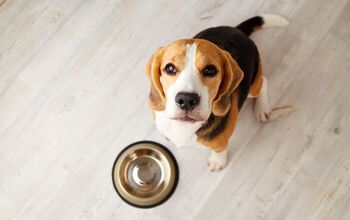Clumberdoodle


About Clumberdoodle
The Clumberdoodle is a great looking hybrid dog that embodies all of the best features of the Clumber Spaniel and the Poodle. These smart and loyal dogs are known for their endearing personality, their playful nature, and their gentle disposition. They are ideal for all types of families, and they are one-of-a-kind dogs that are sure to bring anyone joy, thanks to their cheerful and alert temperament.
Below is a bit of helpful information about the Clumberdoodle. Check it out to learn more about this breed and determine if it would be the right fit for your household.
The Clumberdoodle is a cross between a purebred Clumber Spaniel and Poodle.
The Clumberdoodle is a designer crossbreed whose origins are not entirely clear.
The Clumberdoodle is a cross between a purebred Clumber Spaniel and Poodle.
Choose a high quality dry food that you can provide to your Clumberdoodle every day, as this will provide him with the nutrition that needs to stay healthy and energized. A good place to start is by feeding your dog anywhere from 2 to 3 cups of dry food each day, splitting this amount into multiple feedings throughout the day, or at least two feedings per day.
If you choose to also feed your dog some canned food for canines, you should adjust the amount of dry food that you are feeding. This will prevent your dog from eating too much and gaining too much weight that could put his health at risk.
The Clumberdoodle responds very well to training.
The Clumberdoodle responds very well to training. As long as you have a firm, consistent approach and a patient attitude, these dogs will be ready to please, and they will learn rather quickly, thanks to their high level of intelligence.
Establish yourself as the pack leader, start training your dog from as early on as possible, and make it a point to use positive reinforcement and rewards to encourage your dog to perform well and to be confident and happy.
A medium-sized breed, the Clumberdoodle weighs between 45 and 85 pounds.
Clumberdoodles make great family pets, as they can get along with anyone. They are smart and friendly, as well as social and playful. If you are searching for a dog who will be affectionate, a little independent, alert, energetic, and loyal, a Clumberdoodle will not disappoint.
These dogs should be given plenty of attention so that they will not become bored or lonely. They will get along well with children and other pets, thanks to their easygoing personality, especially when they are raised with other animals.
Because the Clumberdoodle is a hybrid dog breed, it may be prone to getting some of the health problems that its parent breeds often deal with. However, it is impossible to determine what an individual dog’s health will be like over the course of his life, and there is no guarantee that a Clumberdoodle will inherit any of the health problems of its parents.
Because Clumber Spaniels tend to be prone to dry eyes, cataracts, panosteitis, flea allergies, skin allergies, hip dysplasia, and entropion, keep an eye out for these conditions. Also, Poodles may suffer from hip dysplasia, sebaceous adenitis, Cushing’s disease, Addison’s disease, and gastric dilatation-volvulus, so be aware of the signs for those conditions in your Clumberdoodle as well.
The Clumberdoodle has an average lifespan of 10 to 13 years.
A Clumberdoodle will do well in a house or in an apartment, especially if he is able to enjoy some time outside exercising every day. These dogs should also have plenty of toys to keep their minds occupied while indoors.
Take your dog on a daily walk for some exercise, play fetch or have your dog chase a ball, and find other ways to allow the playful nature of this dog to shine through.
Clumberdoodles make great family pets, as they can get along with anyone.
The Clumberdoodle is not recognized by the American Kennel Club, as it is considered to be a hybrid breed.
A Clumberdoodle’s coat can be curly like its Poodle parent, feathered, soft, and straight like its Clumber Spaniel parent, or a combination of the two coat types.
In addition to bathing your dog whenever he gets too dirty, a regular brushing schedule will be necessary. This will ensure that the coat does not become tangled or matted. Also, depending upon the coat, this breed could be a light or a heavy shedder, or somewhere in between.
As with all other small puppies, you should handle the Clumberdoodle with care, and teach your kids to do the same so that your puppy will not get hurt.
It is also a great idea to start socializing your dog from an early age so that he can be comfortable around a variety of people and pets. Start training your pet as soon as possible, too, so he will exhibit the best behavior.
Photo credit: goldendoodleranch.com

Lisa Selvaggio is a freelance writer and editor, and our resident cats-pert, with certifications in pet nutrition and pet first aid. She enjoys producing content that helps people understand animals better so they can give their pets a safe and happy home.
More by Lisa Selvaggio
























